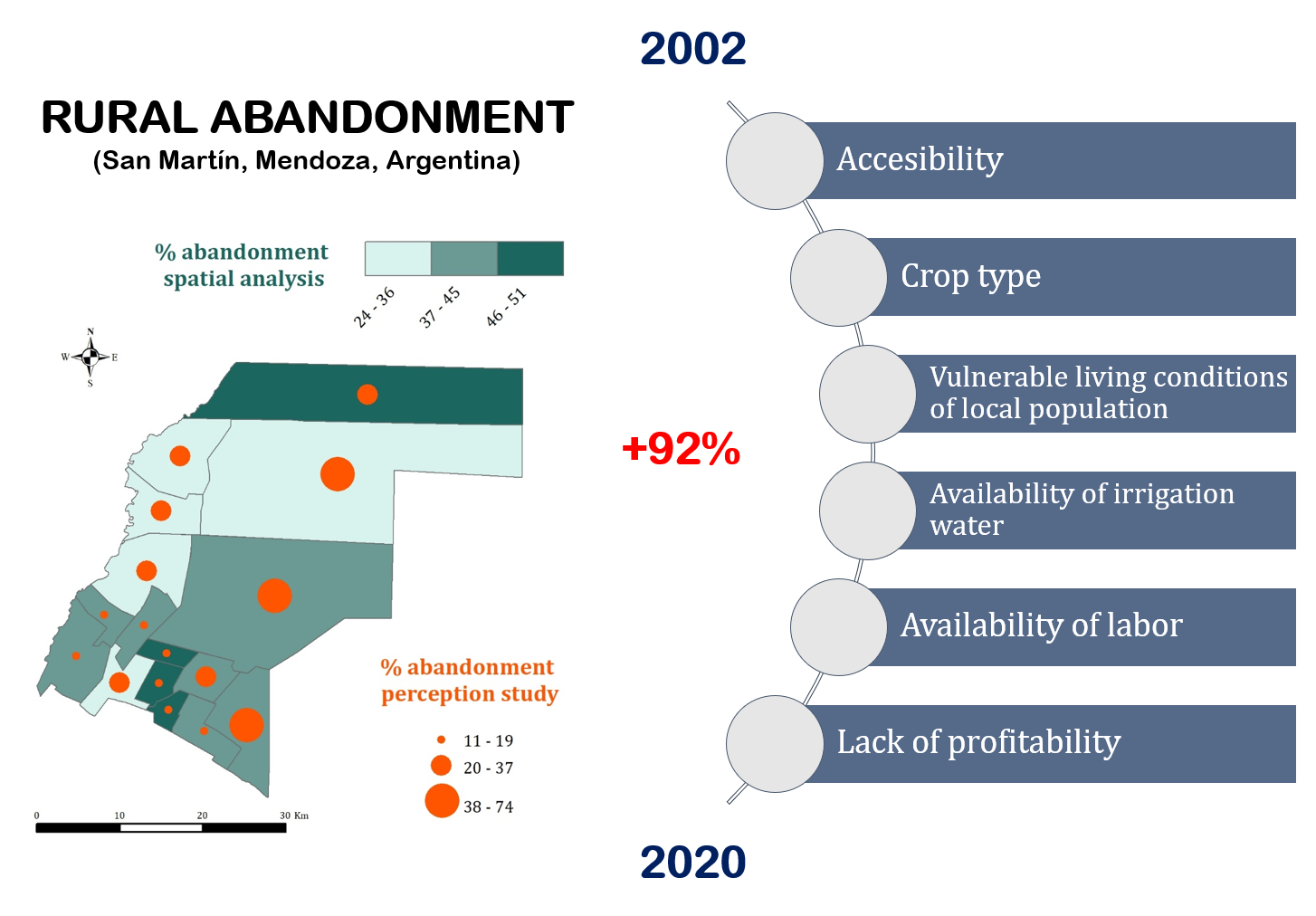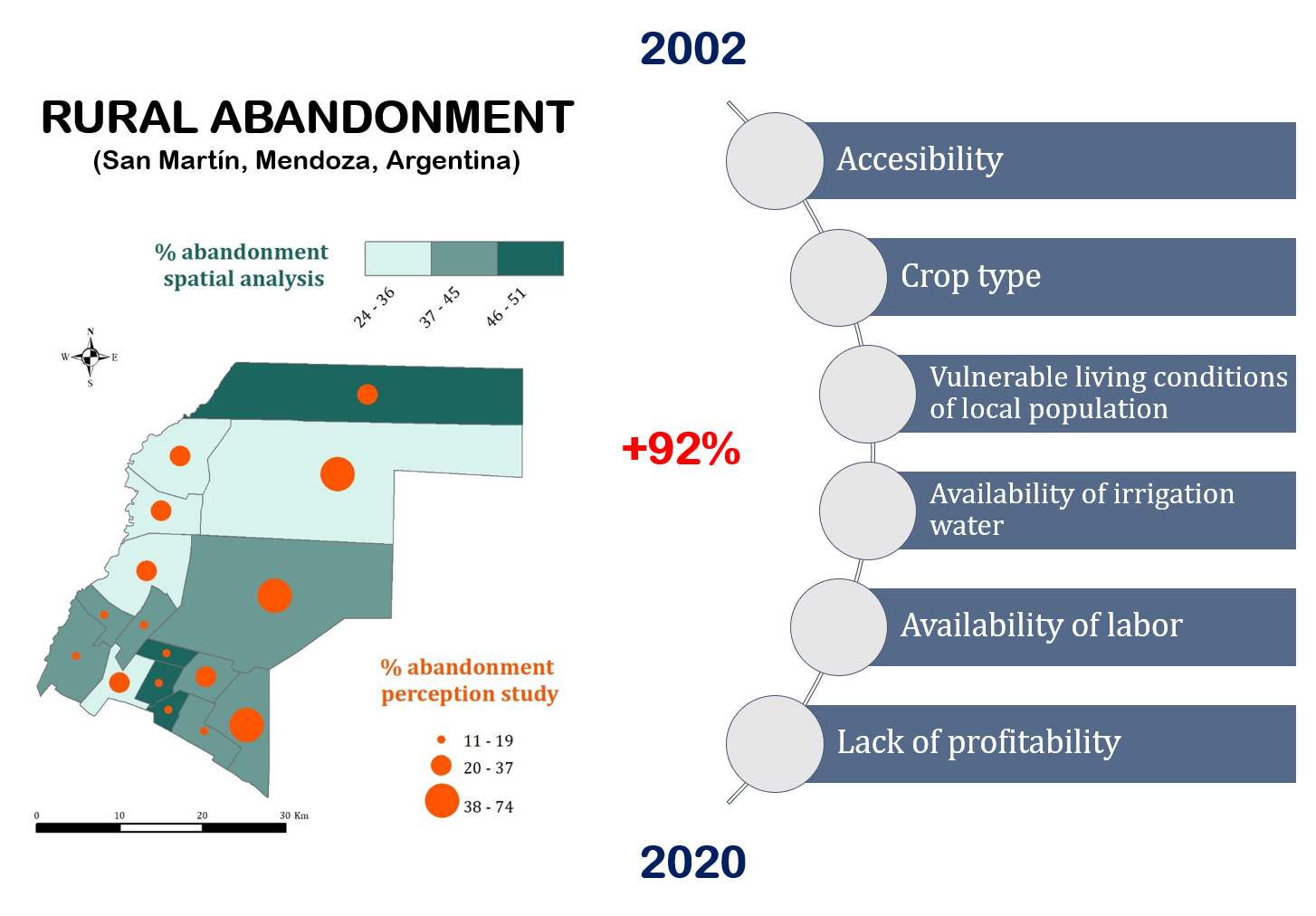Rural abandonment and its drivers in an irrigated area of Mendoza (Argentina)
DOI:
https://doi.org/10.48162/rev.39.121Keywords:
agricultural land abandonment, NDVI difference technique, spatial modeling, social actors’ perceptionAbstract

Rural abandonment is a global phenomenon promoted by biophysical, socio-economic, and socio-productive causes, leading to the disappearance of traditional agricultural practices and serious impacts on food security and local livelihoods. This phenomenon is more complex in drylands since the lost of productive land is unlikely to be recovered due to the limited availability of water resources. This study aimed to identify abandoned agricultural lands in a sector located east of the northern oasis of Mendoza (Argentina) and determine the main driving forces leading this process. The interdisciplinary perspective employed included the Normalized Difference Vegetation Index (NDVI) difference technique implemented on Landsat images, the boosted regression trees analysis of spatially explicit drivers, and a digital survey providing perception assessments from local producers and their technical advisors. Abandoned agricultural land has increased by 92% between 2002 and 2020, being accessibility, crop type, vulnerable living conditions of the local population, availability of irrigation water and labor, and the lack of profitability, the main drivers identified by both sources of information (spatial model and social perception). The proposed approach contributes to monitore productive resources and land-use planning with a holistic and long-term vision.
Highlights:
- Rural abandonment was addressed as an environmental problem from an interdisciplinary perspective.
- Abandoned land was detected using the Normalized Difference Vegetation Index (NDVI) difference technique.
- The spatial analysis and the perception study indicated mostly the same land-use change drivers.
- Abandoned agricultural land increased by 92% between 2002 and 2020 in San Martín (Mendoza).
- The main drivers of abandonment were accessibility, crop type, vulnerable living conditions of the local population, availability of irrigation water and labor, and the lack of profitability.
Downloads

Published
How to Cite
Issue
Section
License
Copyright (c) 2018 Revista de la Facultad de Ciencias Agrarias UNCuyo

This work is licensed under a Creative Commons Attribution-NonCommercial-ShareAlike 3.0 Unported License.
Aquellos autores/as que tengan publicaciones con esta revista, aceptan las Políticas Editoriales.










.jpg)




